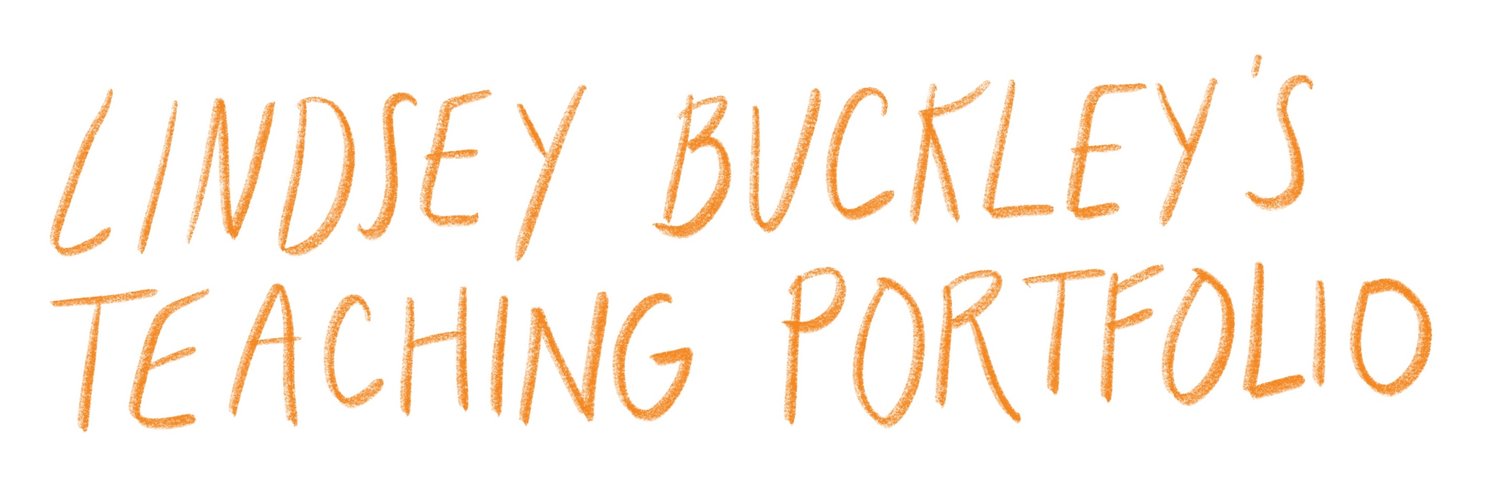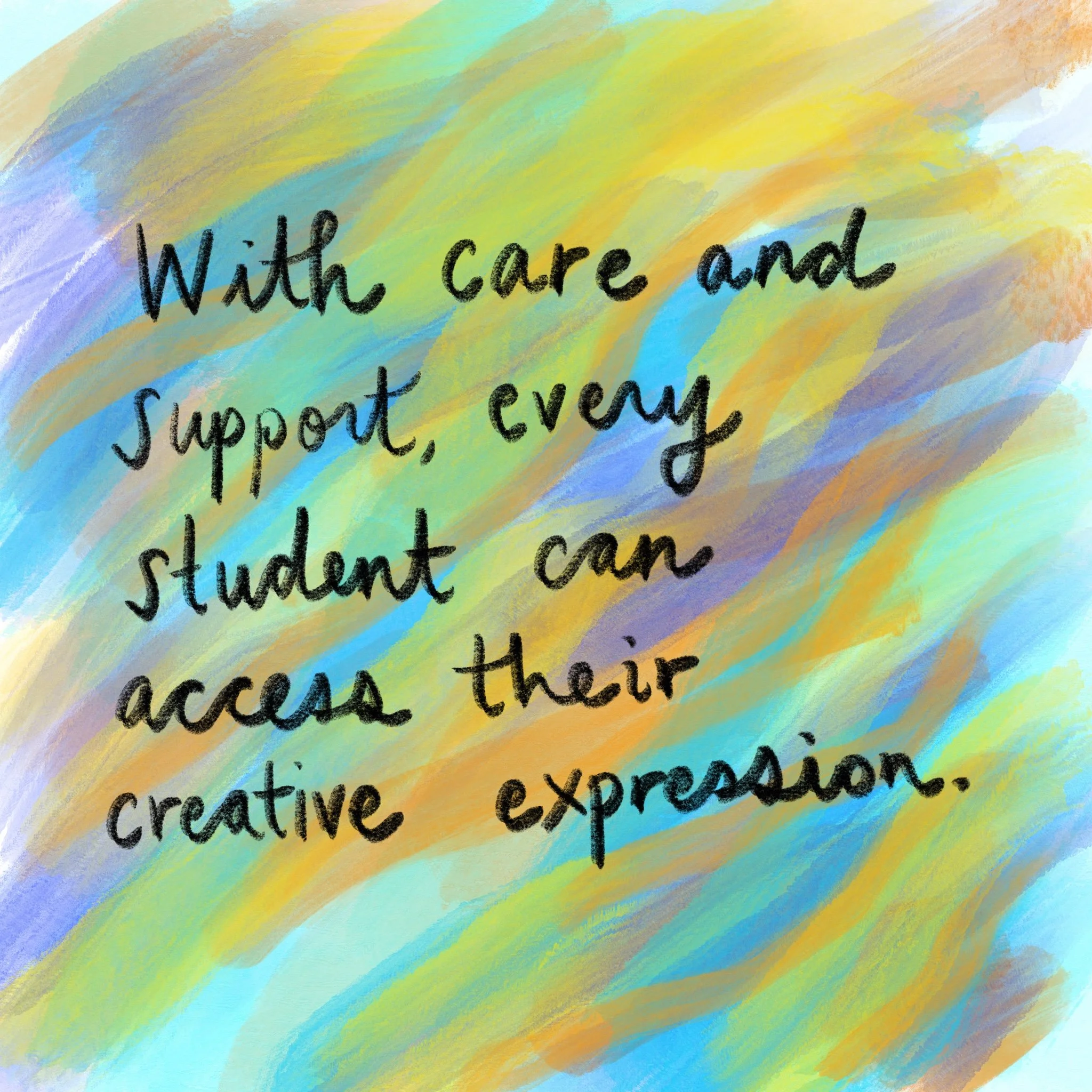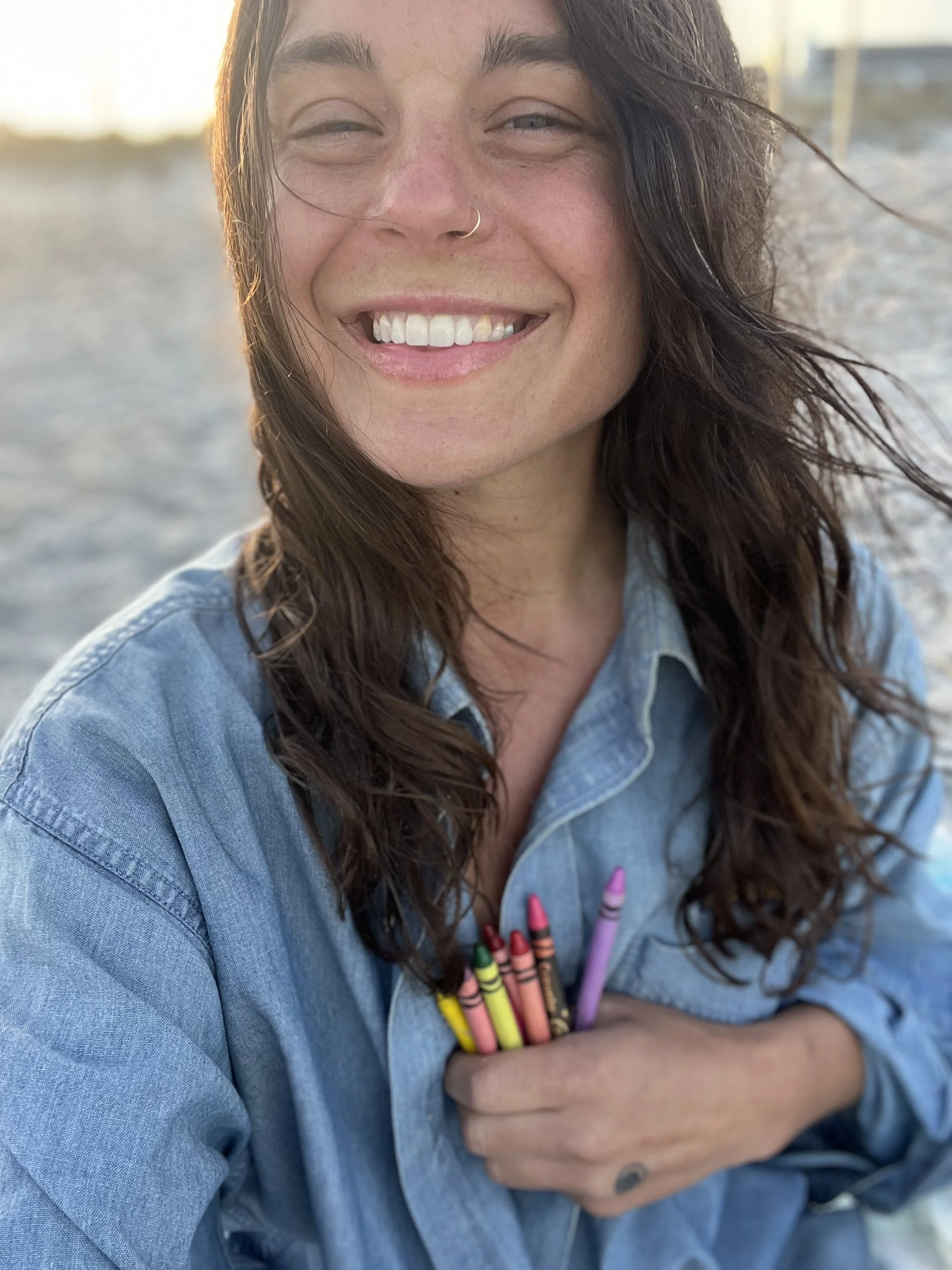My teaching philosophy is rooted in ensuring that each student leaves my classroom knowing that they are creative. I am committed to supporting my students to develop confidence in continuing to expand their relationship to creativity outside of art class. As a teacher, I am an advocate for equity in the arts, and the accessibility of art for everyone.
First and foremost, I work with contemporary mentor artists whom the students can see themselves reflected in. My primary concern is that they know there are artists living and working in the world that look like them, that come from the same cultural and ethnic backgrounds as them, and that identify in the ways that they do. My teaching style is focused in building skills, which then leads towards opening space for mixed media exploration and dynamic expression. I am passionate to support students to find relationships between traditional art making practices, and modern digitally based practices.
In my classroom we focus heavily on artistic behaviors. We explore how artists navigate and relate to their practice within different real life contexts. This is rooted in TAB (Teaching for Artistic Behavior). My approach to TAB varies from primary to secondary, and is also dependent on what class I am teaching (studio art vs. a discipline focused class).
In my classroom we explore art as a form of therapy in conjunction with art as a pathway for community building. My lessons often focus on identity exploration. I guide my students to look under the surface of their appearance. I think this practice is incredibly necessary as adolescents are heavily engaged with social media and smart devices, where there is a major emphasis on external appearance (which encourages consumption, classism, and potentially racism). In my classroom, we explore projects that support students in understanding themselves from the inside out. My lessons are often focused in social-emotional learning. The combination of identity exploration and social emotional learning is imperative as we recover from the impacts of covid, especially within a community and communicative context. My approach to identity exploration and social emotional learning also varies from primary to secondary classrooms.
I strongly believe the art classroom is a space for students to expand their capacity for creative thinking and problem solving. These are skills that are deeply important for students to develop as they enter into the modern work force. In my classroom we engage with traditional art materials and digital art materials. I also present a strong emphasis on recycled and up cycled materials, affordable materials, and materials that are accessible in nature. Bridging students focus towards seeing the material world in this way will encourage an inventive lens as opposed to a consumptive lens. This also supports equity in the arts, emphasizing the accessibility of art materials for all.


